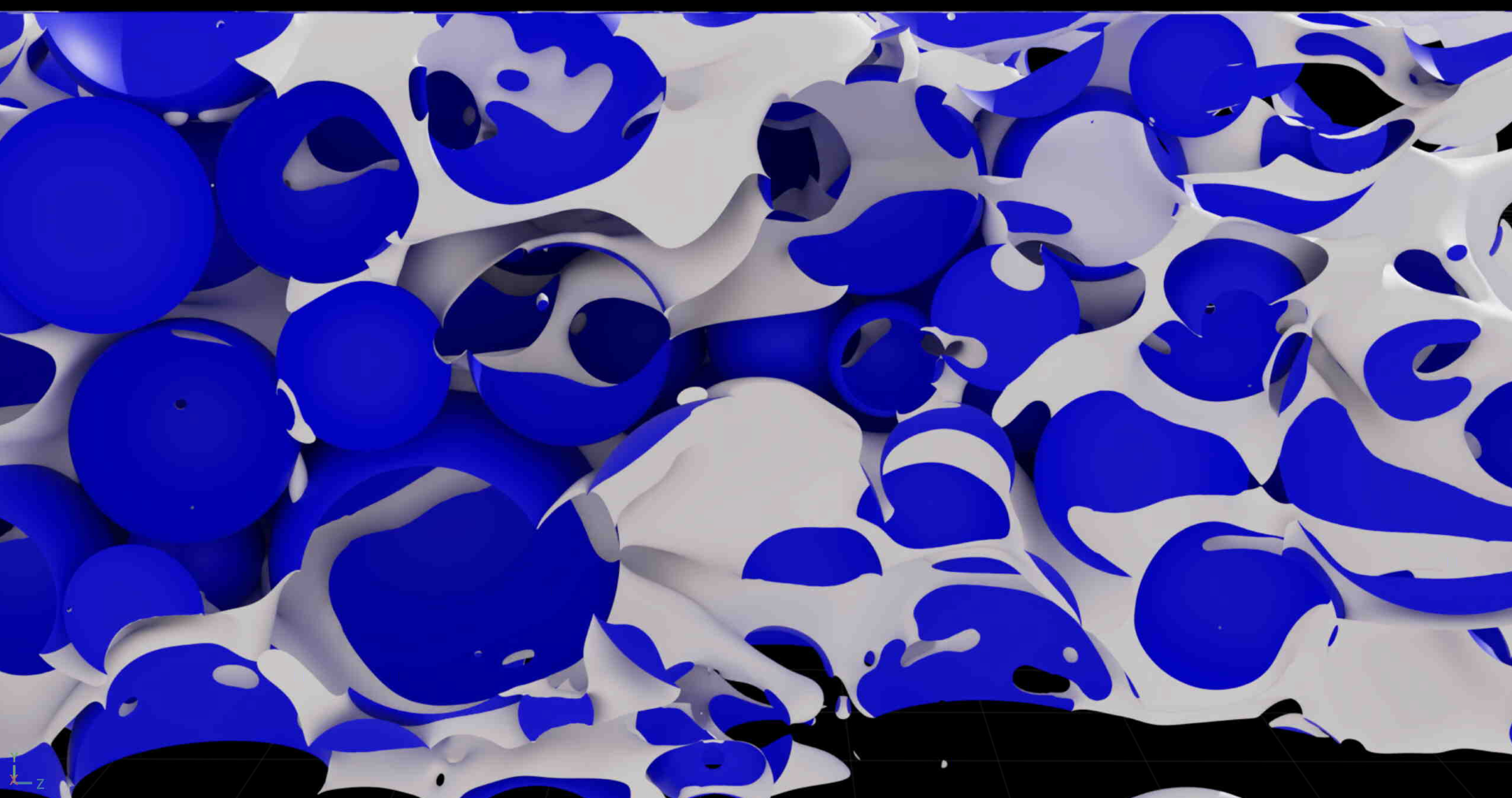Accelerating Scientific Visualizations using NVIDIA Omniverse
HiPerGator’s support of the NVIDIA Omniverse enables researchers to create real-time visual simulations.

Accelerating Scientific Visualizations using NVIDIA Omniverse
HiPerGator’s support of the NVIDIA Omniverse enables researchers to create real-time visual simulations.
Florida has the highest thunderstorm activity in the nation as parts of the state experience up to 100 days of recorded thunderstorms. It isn’t uncommon for residents to wake up to sunshine and later be greeted with midday rain and lightning. Despite the prevalence of afternoon showers, Florida’s sandy beaches, vast aquifer system, and abundance of highly porous limestone mean that rainfall is absorbed with ease.
The process of drainage, in which a porous medium such as clay or sand is initially fully saturated by one fluid and then displaced by another invading fluid, is a common physical phenomenon. When there is more rainfall than the soil can absorb, water will quickly pool and overwhelm both natural drainage systems, such as ponds, and man-made drainage infrastructure, such as storm drains, leading to flash floods or mudslides. These ramifications in the physical environment can be substantial and challenging to analyze, so understanding this phenomenon is essential – especially in the fields of soil remediation, groundwater hydrology, enhanced oil recovery, and carbon sequestration.
To study drainage, Chris Fowler, a high-performance computing and AI researcher at Cambridge Computer, looked at the geometry of the interfaces formed during this phenomenon. Fowler created a computational experiment in which he took a wetting fluid to saturate an idealized porous medium consisting of stationary solid spheres within a rectangular prism, also known as a cuboidal region. The stationary solid spheres are an approximation comparable to a porous medium like sand. Then, by applying a pressure gradient across the prism from one face of the domain, he initiated propagation of non-wetting fluid through the boundary. As the simulation progressed, the volume of the wetting fluid decreased while the volume of the non-wetting fluid increased. The boundaries along the length of the domain were set to be periodic to allow the fluid to flow out one face of the prism and back into an opposing face.
The theoretical and computational methods that supported this simulation were highlighted in UF Information Technology’s feature of a 2024 hero-run on the University of Florida’s supercomputer, HiPerGator. In collaboration with UFIT staff, UF Distinguished Professor and project owner Dr. Rafael Muñoz-Carpena, University of North Carolina at Chapel Hill professor Dr. Cass T. Miller and UF’s NVIDIA AI Technology Center, Fowler’s hero-run laid the groundwork to facilitate a new simulation of this complex phenomenon.
Fowler developed a scientific visualization tool using NVIDIA’s Omniverse supported by HiPerGator AI to further advance our understanding of the complex phenomenon that can occur during two-fluid flow through porous mediums. This tool enables high fidelity and near real-time rendering of very large visualization files, bringing us closer to recreating the phenomenon as it occurs in nature. To render the polygonised surfaces in Omniverse, Fowler used an L40S machine provided by NVIDIA. Below is a movie produced to demonstrate the drainage phenomenon with Omniverse:
Fowler’s simulation took place over 12 hours on 64 A100 graphics processing units on HiPerGator AI. Triangular polygonization of the fluid-fluid and fluid-solid interfaces was produced using a porous medium extension of a Marching Cubes algorithm and was collected every 10,000-time steps. Triangular polygonization reduces the complex shape of the simulation into a collection of simple shapes, which in this case resulted in millions of triangles where the analysis would take place. Calculating across millions of data points one at a time is expensive and excessively laborious. With the NIVIDA Omniverse, Fowler could complete his calculations simultaneously and immediately translate them into a visualization. The NVIDIA Omniverse allowed Fowler to see his experimentation results in real-time with high-quality visualizations that correspond to the physical phenomenon of two-fluid flow into the measured geometrical surfaces produced.
Chris Fowler is a PhD candidate at the University of North Carolina Chapel Hill and an HPC/AI Research Scientist at Cambridge Computer. He collaborated with several NVIDIA Solution’s Architect teams to make this visualization possible, including Corey Wheeler, Mark Hill Zoe Ryan, and Martin Jajam. Adam Clayton of Borderless Pictures produced the final video.
